From =BBC News
Devon Van Houten Maldonado - Features correspondent
Edited by Amal Udawatta
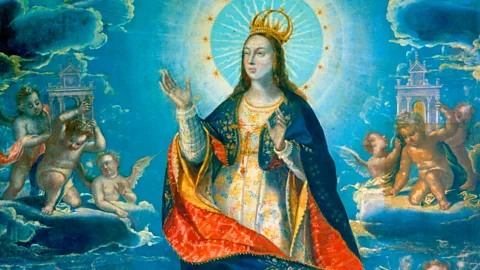 Museo Nacional de Arte de Mexico
Museo Nacional de Arte de MexicoThe colour survives in the work of 17th Century Spanish colonial painters, a symbol of the wealth that ultimately doomed the Maya, writes Devon Van Houten Maldonado.
In 17th Century Europe, when Michelangelo Merisi da Caravaggio and Peter Paul Rubens painted their famous masterworks, ultramarine blue pigment made from the semi-precious lapis lazuli stone was mined far away in Afghanistan and cost more than its weight in gold. Only the most illustrious painters were allowed to use the costly material, while lesser artists were forced to use duller colours that faded under the sun. It wasn’t until the industrial revolution in the 19th Century that a synthetic alternative was invented, and true ultramarine blue finally became widely available.
Across the Atlantic Ocean, colonial Baroque works created by artists like José Juárez, Baltasar de Echave Ibia and Cristóbal de Villalpando in early 17th Century Mexico – New Spain – were full of this beautiful blue. How could this be? Lapis lazuli was even rarer in the New World. It wasn’t until the middle of the 20th Century that archaeologists discovered the Maya had invented a resilient and brilliant blue, centuries before their land was colonised and their resources exploited.
The ultramarine blue procured from lapis lazuli in Europe was not only incredibly expensive, but also extremely laborious to make. In Europe, blue was reserved for the most important subject matter. Rubens' Adoration of the Magi – the version that hangs in the Museo del Prado in Madrid and which he worked on for over 20 years – is an example. The colour was primarily used to paint the robes of the Virgin Mary, and later extended to include other royalty and holy figures. In Mexico, on the other hand, blue was used to paint altogether less holy and everyday subjects.
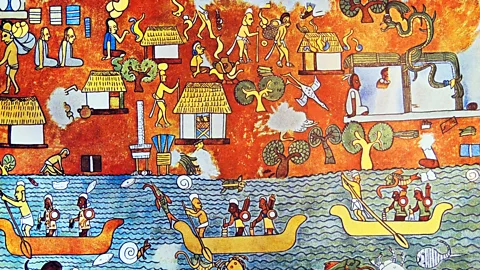 Getty Images
Getty ImagesArchaeologists studying pre-Hispanic Mesoamerican ruins were surprised by the discovery of blue murals in the Maya Riviera, modern day Mexico and Guatemala, from as early as 300 AD, perhaps the most famous being the murals at the temple of Chichén Itzá (created around 450 AD). The colour had a special ceremonial significance for the Maya. They covered sacrificial victims and the altars on which they were offered in a brilliant blue paint, writes Diego de Landa Calderón, a bishop in colonial Mexico during the 16th Century, in his first-hand account.
 Museo Nacional de Arte de Mexico
Museo Nacional de Arte de MexicoArchaeologists were puzzled by the resilience of the blue in the murals. The añil plant, part of the indigo family, was widely available in the region but was mostly used for dyes rather than paint. Indigo was quick to fade in the sunlight and natural elements, so experts mused that the Maya couldn’t have used the same widely available dye to paint the murals. It wasn’t until the late 1960s that the source of Maya blue’s resilience through the centuries was discovered: a rare clay called attapulgite, which was mixed with the dye from the añil plant. During colonisation native materials like Maya blue and cochineal were exploited along with every other resource of the land and its people in the New World. These colours, which supposedly represented the wealth of the Maya empire, would stand as a symbol of all that would be plundered.
Rhapsody in blue
Master painters from the Americas are discussed in art history – if they’re mentioned at all – as a lesser school of Baroque compared to Caravaggio and Rubens. It's overly simplistic to assume that these Baroque masters were only impersonating their European predecessors. In fact, second and third generation painters born in Mexico City, such as Juárez and Echave Ibia, departed from European aesthetics, but arrived to something uniquely layered: enormous and sophisticated compositions that drew upon the full vibrancy of the New World. At Mexico’s National Art Museum (Munal) in Mexico City, works by Juárez seen chronologically show his development from a European impersonator to a New Spanish Baroque master. His early canvases departed from the dramatic spotlighting and warmth of European Baroque imagery and later moved into cold saturation throughout the picture plane (vibrant blues, yellows, greens and reds), multiple light sources, collaged compositions and grand scale – and in part because the use of local materials, such as Maya blue, expanded his palette.
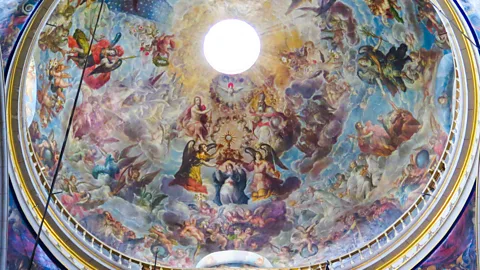 Devon Van Houten Maldonado
Devon Van Houten MaldonadoWhile Rubens also used vibrant colours, his compositions, on the whole, were more chaotic and warmer than those of Juárez. His pallet was even more vibrant than Rubens’, perhaps the most vibrant of the European Baroques, but his compositions were more akin to Caravaggio. Caravaggio's canvases were, without fail, full of rich reds and yellows, but nearly devoid of blue – if you think of a Caravaggio masterpiece, blue is usually absent. The closest to a blue-tinted Caravaggio you can find is Juárez’s work, but, despite his prolific reach and realised compositions, Juárez died in poverty. If Juárez died without a peso to his name, how would he have had the resources to order large quantities of precious lapis lazuli from Europe?
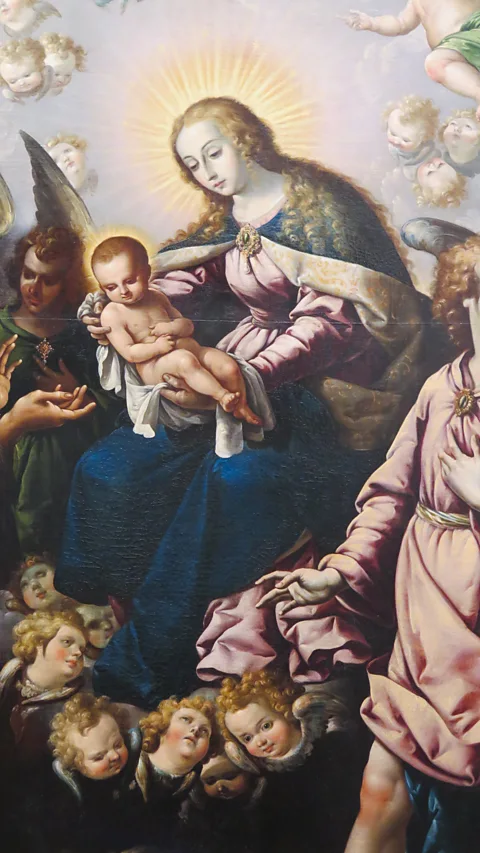 Devon Van Houten Maldonado
Devon Van Houten MaldonadoOn the other hand, Villalpando, often said to be the most prolific colonial painter in New Spain, imitated the chaotic compositions by Rubens. Villalpando fits more neatly into the European history of Baroque painting and didn't depart from Rubens' ‘fear of space’ – the Baroque notion that every space of the canvas must crammed with imagery and incident – thus he was accepted by the canon of art history as the mascot of Novohispanic Baroque painting. Still, as much as he wanted to imitate Rubens, Villalpando painted with Mesoamerican materials and labour. The consistent result – the same as his peers in Mexico – was that his paintings and murals were cooler and more saturated. His mural adorning the dome of Puebla's cathedral was the first and only of its kind in New Spain. Swirling blue and purple clouds back the images of the virgin, the saints and the angels painted by Villalpando. Even though he sought to make European Baroque in the Americas, his materials gave him away as a criollo, a non-mixed-race descendant of the original Spanish settlers, from Mexico City.
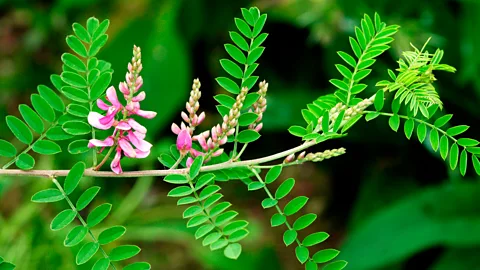 Alamy
AlamyBaltasar de Echave Ibia painted such elaborate blues that he became known as ‘El Echave de los azules’ (the Echave of the blues). His father, Baltasar de Echave Orio, also used blue generously, but Echave Ibia was especially famous for his copious use and mastery of the colour. There is a reason why Ibia, working in Mexico City between the 17th and 18th Centuries, had access to seemingly limitless amounts of blue. All three had had sources of the brilliant colour closer to home.
 Alamy
AlamyThe lack of written evidence of the use of añil or Maya blue in Novohispanic Baroque paintings is made up for with visual evidence. From these painters and others in the colonised Americas it's apparent that Baroque artists in the New World weren’t using the same blue pigment as their European peers. The lapis lazuli blue being used in Europe was a dark ultramarine blue. While the blue being used in New Spain reflected the vivid azure, originally extracted from añil by the Maya. Maya blue is one of the most durable of all Mesoamerican colours, as seen in the 1,600-year-old murals at Chichén Itzá. Perhaps the same resistance to time has kept Baroque canvases and murals in the Americas, from Mexico to Peru, bright through the centuries.
This cross-pollination of influences, from Maya to European Baroque, happening in Latin America on the canvases of criollo painters suggests globalism began much sooner than academic history has led us to believe.
Comments
Post a Comment